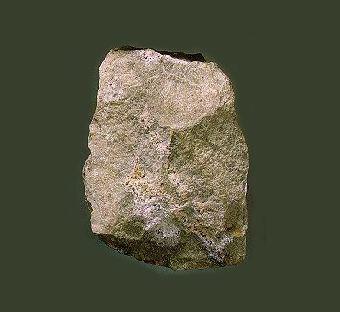 The first rocks on Earth were igneous rocks. Igneous rocks are formed by the cooling and hardening of molten material called magma. The word igneous comes from the Latin word ignis, meaning "fire." There are two types of igneous rocks: intrusive and extrusive. Intrusive igneous rocks form within Earth's crust: the molten material rises, filling any available crevices in the crust, and eventually hardens. These rocks are not visible until Earth above them has eroded away. A good example of intrusive igneous rock is granite. Extrusive igneous rocks form when the magma pours out onto Earth's surface or erupts at Earth's surface from a volcano. Once on the surface (where it is called lava), it begins to cool and the minerals in the rock crystallize or grow together so that the individual crystals lock together. Extrusive rocks are also called volcanic rocks. Basalt, formed from hardened lava, is the most common extrusive rock. Obsidian, a black, glassy rock, is also an extrusive rock. Read more: http://www.scienceclarified.com/Ro-Sp/Rocks.html#ixzz0PY2xbzSF
The first rocks on Earth were igneous rocks. Igneous rocks are formed by the cooling and hardening of molten material called magma. The word igneous comes from the Latin word ignis, meaning "fire." There are two types of igneous rocks: intrusive and extrusive. Intrusive igneous rocks form within Earth's crust: the molten material rises, filling any available crevices in the crust, and eventually hardens. These rocks are not visible until Earth above them has eroded away. A good example of intrusive igneous rock is granite. Extrusive igneous rocks form when the magma pours out onto Earth's surface or erupts at Earth's surface from a volcano. Once on the surface (where it is called lava), it begins to cool and the minerals in the rock crystallize or grow together so that the individual crystals lock together. Extrusive rocks are also called volcanic rocks. Basalt, formed from hardened lava, is the most common extrusive rock. Obsidian, a black, glassy rock, is also an extrusive rock. Read more: http://www.scienceclarified.com/Ro-Sp/Rocks.html#ixzz0PY2xbzSF
Subscribe to:
Post Comments (Atom)
0 comment/s:
Post a Comment